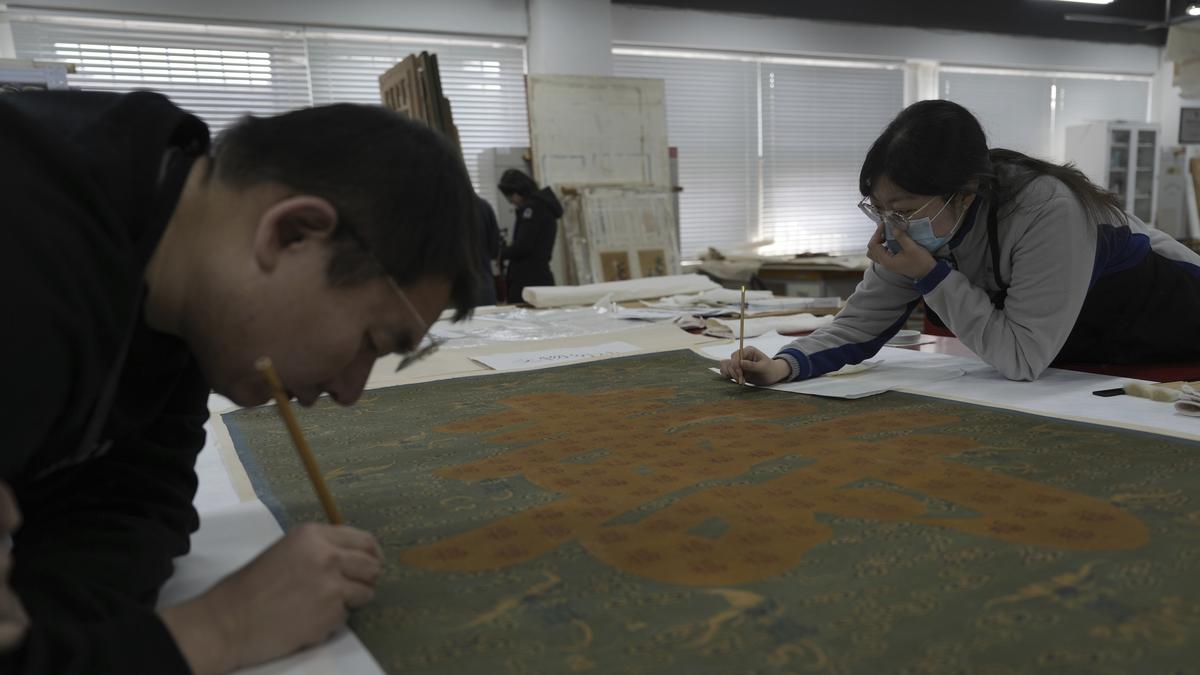
In China’s Forbidden City, a mix of science and tradition helps restore relics
The Hindu
Restorers at Beijing's Forbidden City Museum use modern technology to preserve ancient artifacts with traditional techniques.
It's highly technical work in what looks more like a lab than a museum: A fragment of a glazed roof tile from Beijing’s Forbidden City is analyzed in a state-of-the-art X-ray diffraction machine that produces images, which are then projected onto computer screens.
The fragment being examined has a dark area on its surface that restorers want to understand. Their objective is to better preserve the artifacts at the sprawling imperial palace, the former home of China’s emperors and its seat of power for hundreds of years.
“We want to learn what the black material is," said Kang Baoqiang, one of the restorers at the complex, today a museum that attracts tourists from all over the world. “Whether it’s atmospheric sediment or the result of substantial change from within.”
About 150 workers on the team fuse scientific analysis and traditional techniques to clean, patch up and otherwise revive the more than 1.8 million relics in the museum's collection.
They include scroll paintings, calligraphy, bronzes, ceramics — and, somewhat unexpectedly, ornate antique clocks that were gifted to emperors by early European visitors.
Down the hall from the X-ray room, two other restorers patch up holes on a panel of patterned green silk with the Chinese character for “longevity” sewn into it, carefully adding color in a process called “inpainting.”
The piece is believed to have been a birthday gift to Empress Dowager Cixi, the power behind the throne in the late 19th and early 20th century.

 Run 3 Space | Play Space Running Game
Run 3 Space | Play Space Running Game Traffic Jam 3D | Online Racing Game
Traffic Jam 3D | Online Racing Game Duck Hunt | Play Old Classic Game
Duck Hunt | Play Old Classic Game











